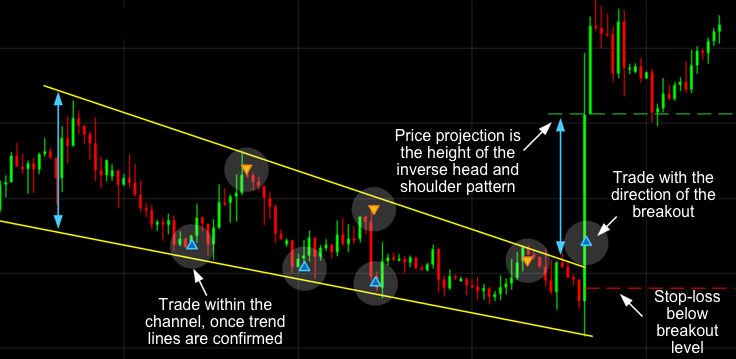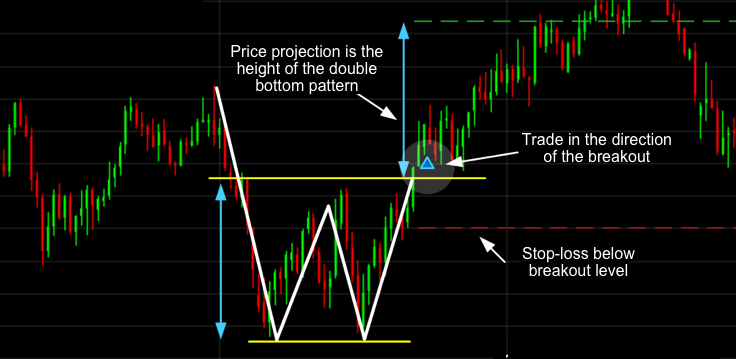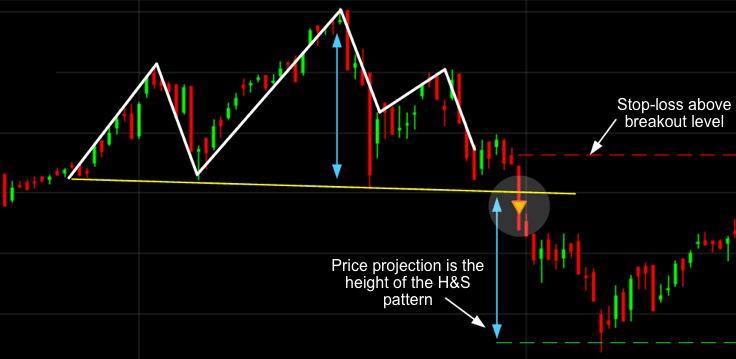Finding chart patterns in financial markets is like discovering hidden treasure on a map—it’s an essential part of technical analysis. Below are the top 11 stock chart patterns that every trader should have in their toolkit. Whether you’re a newbie or a seasoned pro, these patterns can help you spot market trends and predict price moves like a pro!
1. Ascending triangle:
This pattern is like the ultimate party invitation—everyone’s waiting for the breakout! Picture a rising line of support (the eager partygoers) and a flat resistance line (the bouncer at the door). When the two meet, the price is likely to break through the resistance, signalling a bullish move.


2. Descending triangle:
Think of this as the inverse of the ascending triangle—a market that’s had one too many and is heading for a downturn. Here, the support line stays steady while the resistance line slopes downward, pointing to a potential bearish breakout.


3. Symmetrical triangle:
This one’s all about balance—like a tightrope walker. With both support and resistance lines converging, the market is gearing up for a breakout in either direction. It’s like flipping a coin—heads or tails, the breakout’s coming!


4. Pennant:
After a big price surge, the market takes a breather, forming a pennant. It’s like a halftime show at the Super Bowl—the excitement’s not over yet! The price consolidates in a small symmetrical triangle before continuing in the same direction.
.png)
.png)
5. Flag:
Imagine a flag fluttering in the wind, attached to a flagpole. That’s your price action! This pattern appears after a steep price move, with the flag forming a parallelogram against the trend. When it breaks out, expect a reversal in the direction of the trendline!


6. Wedge:
The wedge is like a suspenseful movie—tension builds as the price squeezes tighter between two trendlines. Whether it’s a rising or falling wedge, the climax is a breakout that defies the overall trend. Grab your popcorn; it’s showtime!


7. Double bottom:
The double bottom is the market’s way of saying, “Not today!” It looks like a big “W” and shows that the price has tried twice to break below a support level but couldn’t. After this, the market often shifts into an uptrend. Victory lap, anyone?


8. Double top:
Flip the double bottom upside down, and you’ve got the double top—a pattern that says, “Enough is enough!” It looks like a big “M” and signals a bearish reversal after the price fails to break a resistance level twice. Time to batten down the hatches!


9. Head and shoulders:
This pattern’s a bit of a drama queen—centered around one big peak (the head) flanked by two smaller ones (the shoulders). When the market can’t hold up that big head anymore, it’s usually a sign of a bearish breakout. Lights out for the bulls!


10. Rounding bottom:
The rounding bottom is the market’s way of saying, “Slow and steady wins the race.” It looks like a nice, smooth U-shape and often signals the start of an uptrend. Picture the market warming up for a big rally—ready, set, go!


11. Cup and handle:
This pattern is like a cup of coffee—with a little handle on the side! It starts with a rounding bottom (the cup), followed by a small consolidation (the handle). When the market’s finished brewing, expect an uptrend. Time to sip on those gains!


Trading Chart Types: Choose Your Weapon
In the world of trading, your chart is your sword. Choose wisely:
1. Line chart:
Simple and straightforward—like the line at your favourite coffee shop. It connects the dots between closing prices, giving you a quick overview, but it might miss the juicier details.


2. Bar chart (OHLC):
The bar chart is like your favourite barista—dishing out the highs, lows, opens, and closes with precision. Each bar tells the story of a trading period, with a colour code to show who’s winning the day—green for bulls, red for bears.


3. Candlestick chart:
The candlestick chart is the rockstar of trading charts—flashy, informative, and loved by all. Each candlestick shows the price’s opening and closing, as well as its highs and lows. A green candle? The bulls are in charge. A red candle? The bears are growling. Watch those wicks—they can tell you where the market’s headed next!


Spotting Chart Patterns: The Easy Way
Spotting chart patterns can feel like hunting for Easter eggs—sometimes tricky, but worth it! If you’re struggling, the Pattern Recognition Scanner is like a cheat sheet, helping you find patterns across 120 popular products. Updated every 15 minutes, it’s like having a market-savvy sidekick!
Disclaimer: Century Financial Consultancy LLC (“CFC”) is Limited Liability Company incorporated under the Laws of UAE and is duly licensed and regulated by the Emirates Securities and Commodities Authority of UAE (SCA). This document is a marketing material and is for informational purposes only and must not be construed to be an advice to invest or otherwise in any investment or financial product. CFC does not guarantee as to adequacy, accuracy, completeness or reliability of any information or data contained herein and under no circumstances whatsoever none of such information or data be construed as an advice or trading strategy or recommendation to deal (Buy/Sell) in any investment or financial product. CFC is not responsible or liable for any result, gain or loss, based on this information, in whole or in part.
PLEASE READ THE FOLLOWING TERMS AND CONDITIONS OF ACCESS FOR THE PUBLICATION BEFORE THE USE THEREOF.
By use of the publication and continuing to access the publication, you accept these terms and conditions and undertake to be bound by the acceptance. CFC reserves the right to amend, remove, or add to the publication and Disclaimer at any time without any prior notice to you. Such modifications shall be effective immediately. Accordingly, please continue to review this Disclaimer whenever accessing, or using the publication. Your access of, and use of the publication, after modifications to the Disclaimer will constitute your acceptance of the terms and conditions of use of the publication, as modified. If, at any time, you do not wish to accept the content of this Disclaimer, you may not access, or use the publication. Any terms and conditions proposed by you which are in addition to or which conflict with this Disclaimer are expressly rejected by CFC and shall be of no force or effect.
No information as given herein by CFC in this publication should be construed as an offer, recommendation or solicitation to purchase or dispose of any securities/financial instruments/products or to enter in any transaction or adopt any hedging, trading or investment strategy. Neither this publication nor anything contained herein shall form the basis of any contract or commitment whatsoever. Distribution of this publication does not oblige CFC to enter into any transaction.
The content of this publication should not be considered legal, regulatory, credit, tax or accounting advice. Anyone proposing to rely on or use the information contained in the publication should independently verify and check the accuracy, completeness, reliability and suitability of the information and should obtain independent and specific advice from appropriate professionals or experts regarding information contained in this publication. CFC cannot be held responsible for the impact of any transactional costs or any taxes as may be applicable on transactions.
Information contained herein is based on various sources, including but not limited to public information, annual reports and statistical data that CFC considers reliable. However, CFC makes no representation or warranty as to the accuracy or completeness of any report or statistical data made in or in connection with this publication and accepts no responsibility whatsoever for any loss or damage caused by any act or omission taken as a result of the information contained in this publication. The articles does not take into account the investment objectives, financial situations and specific needs of recipients. The recipient of this publication must make its own independent decisions regarding whether this communication and any securities or financial instruments mentioned herein, is appropriate in the light of its existing portfolio holdings and/or investment needs.
This document is a marketing material and has been prepared by individual(s), marketing and/or research personnel of CFC. It has not been prepared in accordance with legal requirements designed to promote the independence of investment research and as such is purely a marketing communication. In this publication, any opinions, news, research, analysis, prices, or other information constitute is a general market commentary, and do not constitute the opinion or advice of CFC or any form of personal or investment advice. CFC neither endorses nor guarantees offerings of third party, nor is CFC responsible for the content, veracity or opinions of third-party speakers, presenters, participants or providers. CFC will not accept liability for any loss or damage, including without limitation to, any loss of profit, which may arise directly or indirectly from use of or reliance on such information.
Charts, graphs and related data or information provided in this publication are intended to serve for illustrative purposes only. The information contained in this publication is prepared as of a particular date and time and will not reflect subsequent changes in the market or changes in any other factors relevant to their determination. All statements as to future matters are not guaranteed to be accurate. CFC expressly disclaims any obligation to update or revise any forward-looking statements to reflect new information, events or circumstances after the date of this publication or to reflect the occurrence of unanticipated events.
Staff members/employees of CFC may provide/present oral or written market commentary or analysis to you that reflect opinions that are contrary to the opinions expressed in this research and may contain insights and reports that are inconsistent with the views expressed in this publication. Neither CFC nor any of its affiliates, group companies, directors, employees, agents or representatives assume any liability nor shall they be made liable for any damages whether direct, indirect, special or consequential including loss of revenue or profits that may arise from or in connection with the use of the information provided in this publication.
Information or data provided by means in this publication may have many inherent limitations, like module errors or lack accuracy in its historical data. Data included in the publication may rely on models that do not reflect or take into account all potentially significant factors such as market risk, liquidity risk, credit risk etc.
The use of our information, products and services should be on your own due diligence and you agree that CFC is not liable for any failure to achieve desired return on investment that is in any manner related to availing of services or products of CFC and use of our information, products and services. You acknowledge and agree that past investment performance is not indicative of the future performance results of any investment and that the information contained herein is not to be used as an indication for the future performance of any investment activity.
This publication is being furnished to you solely for your information and neither it nor any part of it may be used, forwarded, disclosed, distributed or delivered to anyone else. You may not copy, reproduce, display, modify or create derivative works from any data or information contained in this publication.
Services offered by CFC include products that are traded on margin and can result in losses that exceed deposits. Before deciding to trade on margin products, you should consider your investment objectives, risk tolerance and your level of experience on these products. Trading with leverage carries significant risk of losses and as such margin products are not suitable for every investor and you should ensure that you understand the risks involved and should seek independent advice from professionals or experts if necessary.
Ready to Invest?
Explore a new trading experience with
Century Trader App
Losses can exceed your deposits
Ready to Invest?
Explore a new trading experience with
Century Trader App
Losses can exceed your deposits










